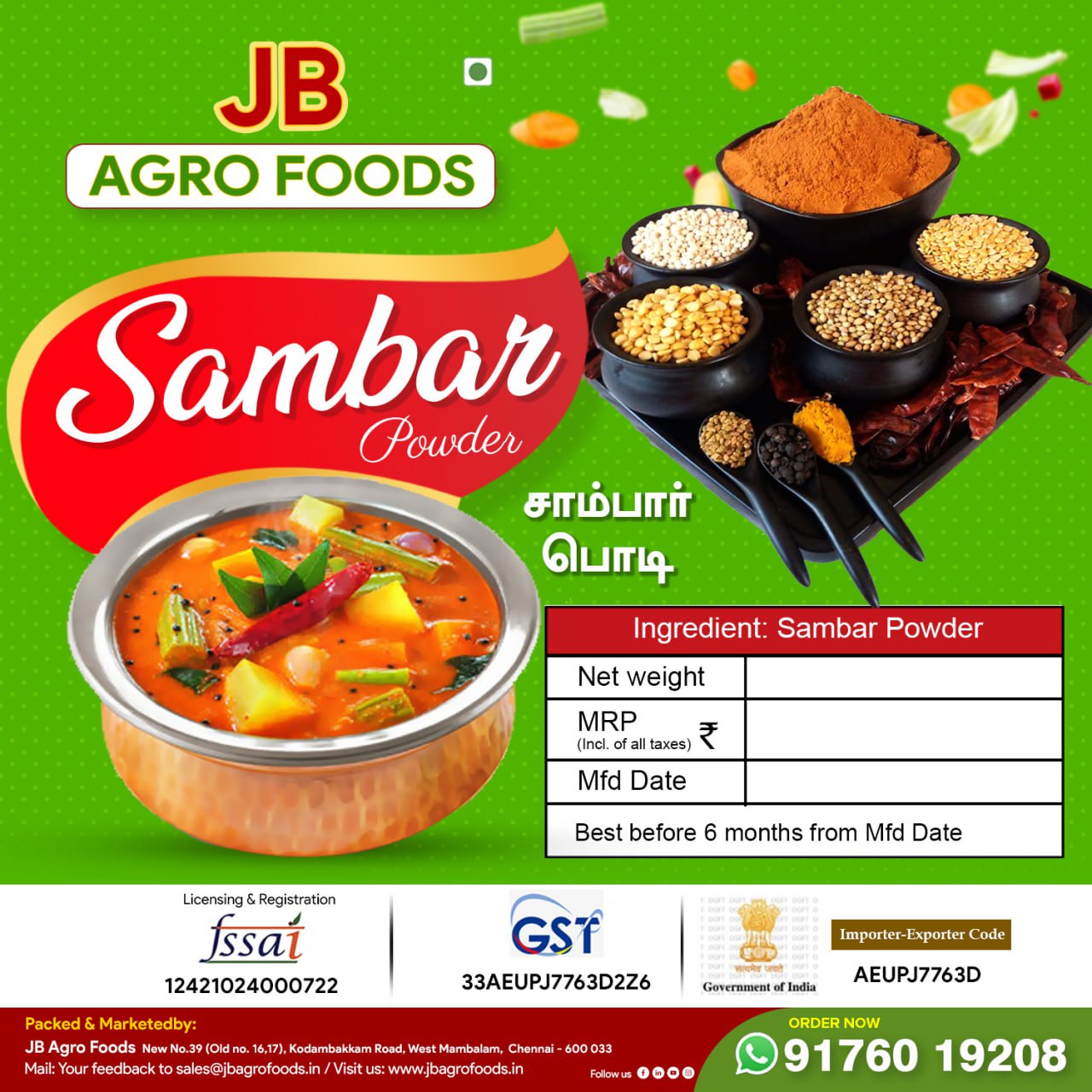Sambar is a quintessential dish in South Indian cuisine, particularly in Tamil Nadu. The origin of sambar and its spice blend, sambar powder, is steeped in history, with a popular legend tracing its roots back to the Maratha rulers of the Thanjavur region in Tamil Nadu.
According to the story, sambar was accidentally created by Shahuji, a Maratha ruler, who was in the Thanjavur court. While preparing a dish for his guest, Shahuji tried to cook a dish using toor dal (pigeon peas) and tamarind, along with some spices. It turned out to be different from what was originally intended, but the result was delicious. The dish was named “sambar” in honor of Sambhaji, Shahuji’s cousin, who was said to be visiting him at the time.
Tips for Making Delicious Sambar:
The secret to a tasty sambar lies in the preparation of the sambar powder, which is a blend of roasted spices that adds depth and flavor to the dish. Here are some tips to ensure your sambar turns out delicious:
⦿ Freshly Ground Sambar Powder: Preparing sambar powder just before making sambar ensures the spices retain their aroma and flavor, enhancing the taste of the dish. If possible, use freshly roasted and ground spices.
⦿ Balance of Ingredients: The right balance of toor dal, tamarind, and sambar powder is crucial. Too much tamarind can make the sambar overly sour, while too little can make it bland.
⦿ Vegetable Selection: Traditional sambar often includes vegetables like drumstick, eggplant, carrot, and pumpkin, each adding a unique flavor. Use fresh, seasonal vegetables for the best taste.
⦿ Tempering: Proper tempering (tadka) with mustard seeds, cumin seeds, curry leaves, and asafoetida adds an extra layer of flavor. This step should be done just before serving to retain the freshness of the spices.
⦿ Simmering: Allowing the sambar to simmer on a low flame after adding the vegetables and sambar powder helps the flavors meld together and enhances the overall taste.

Reviews
There are no reviews yet.